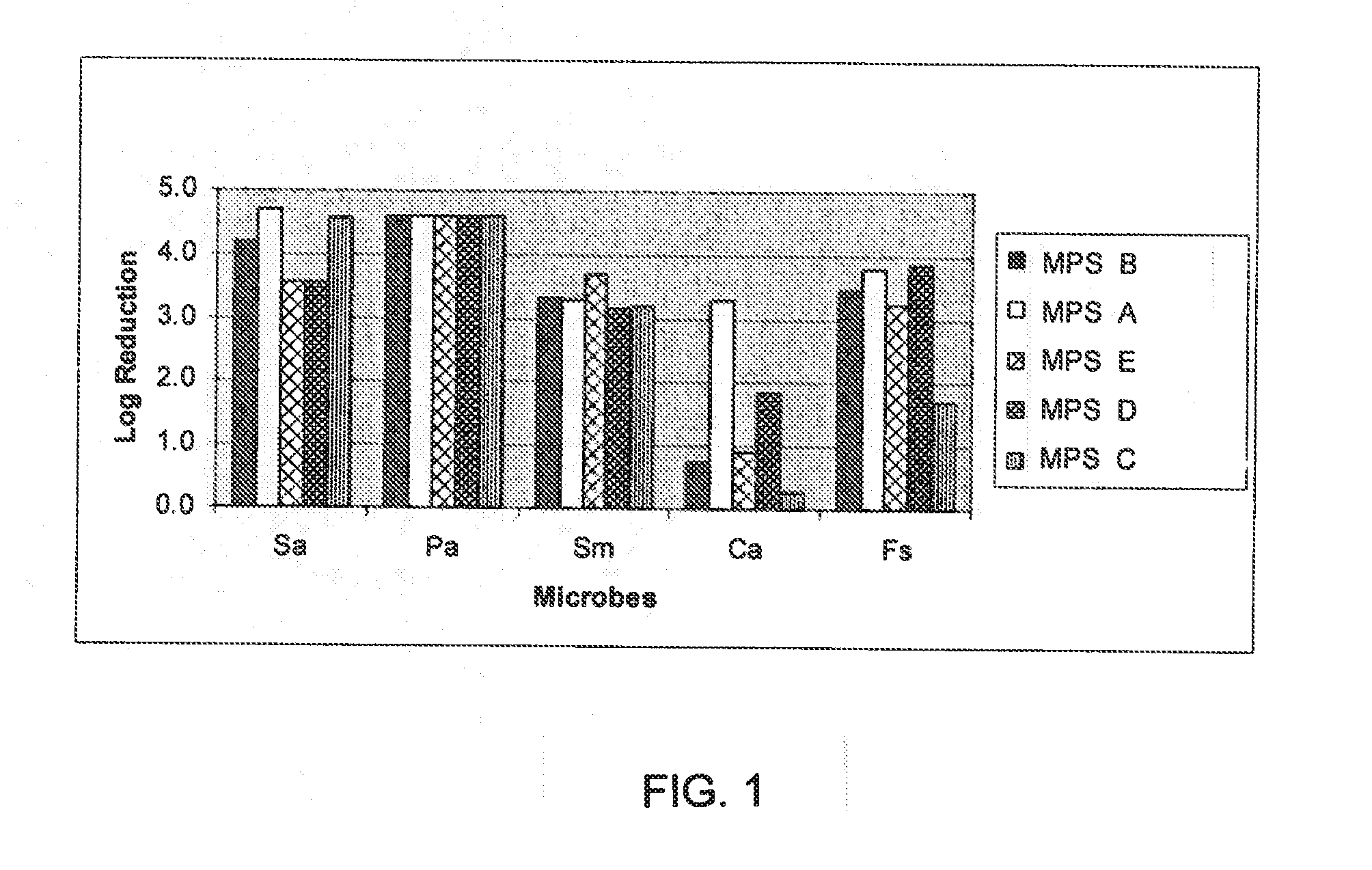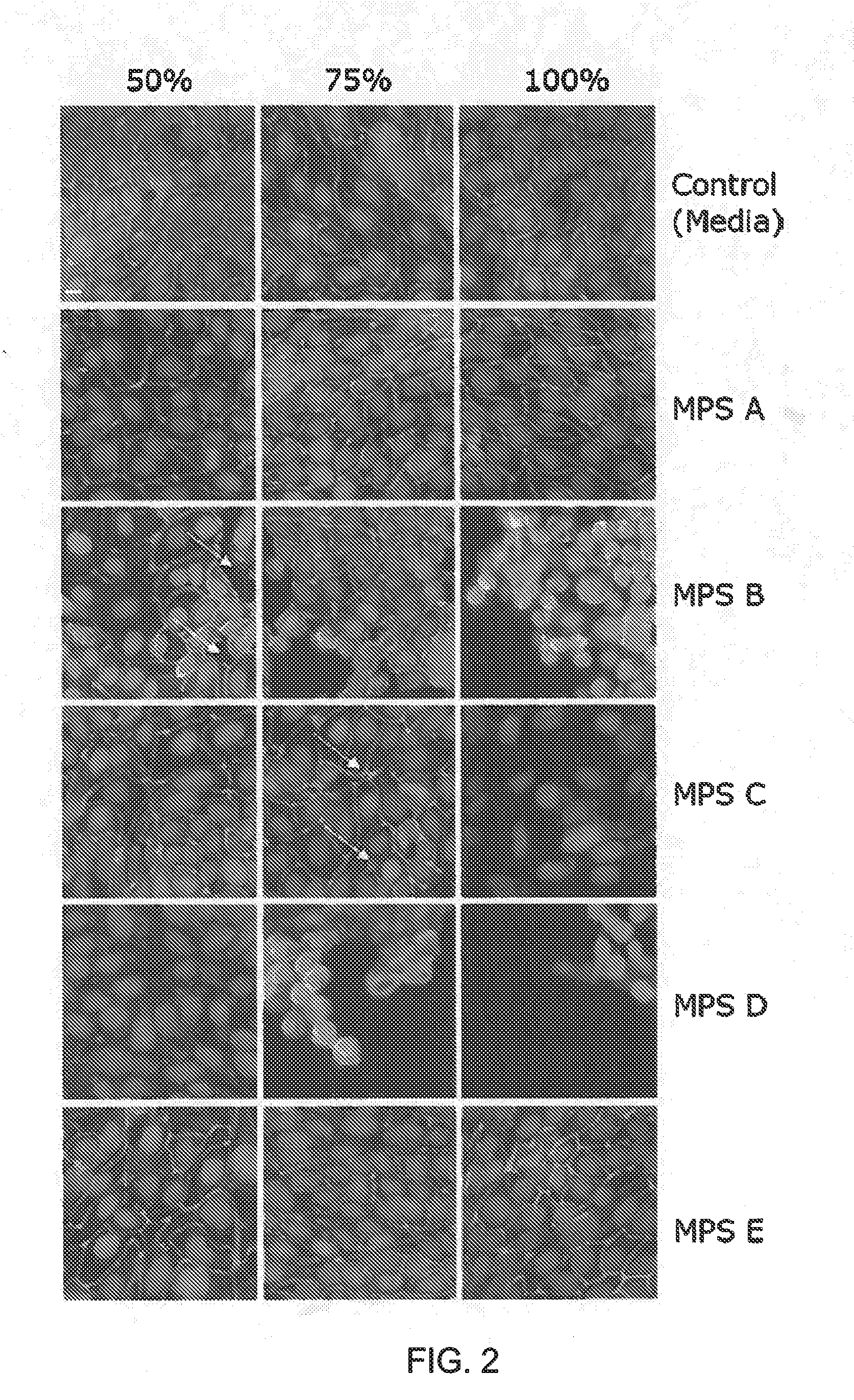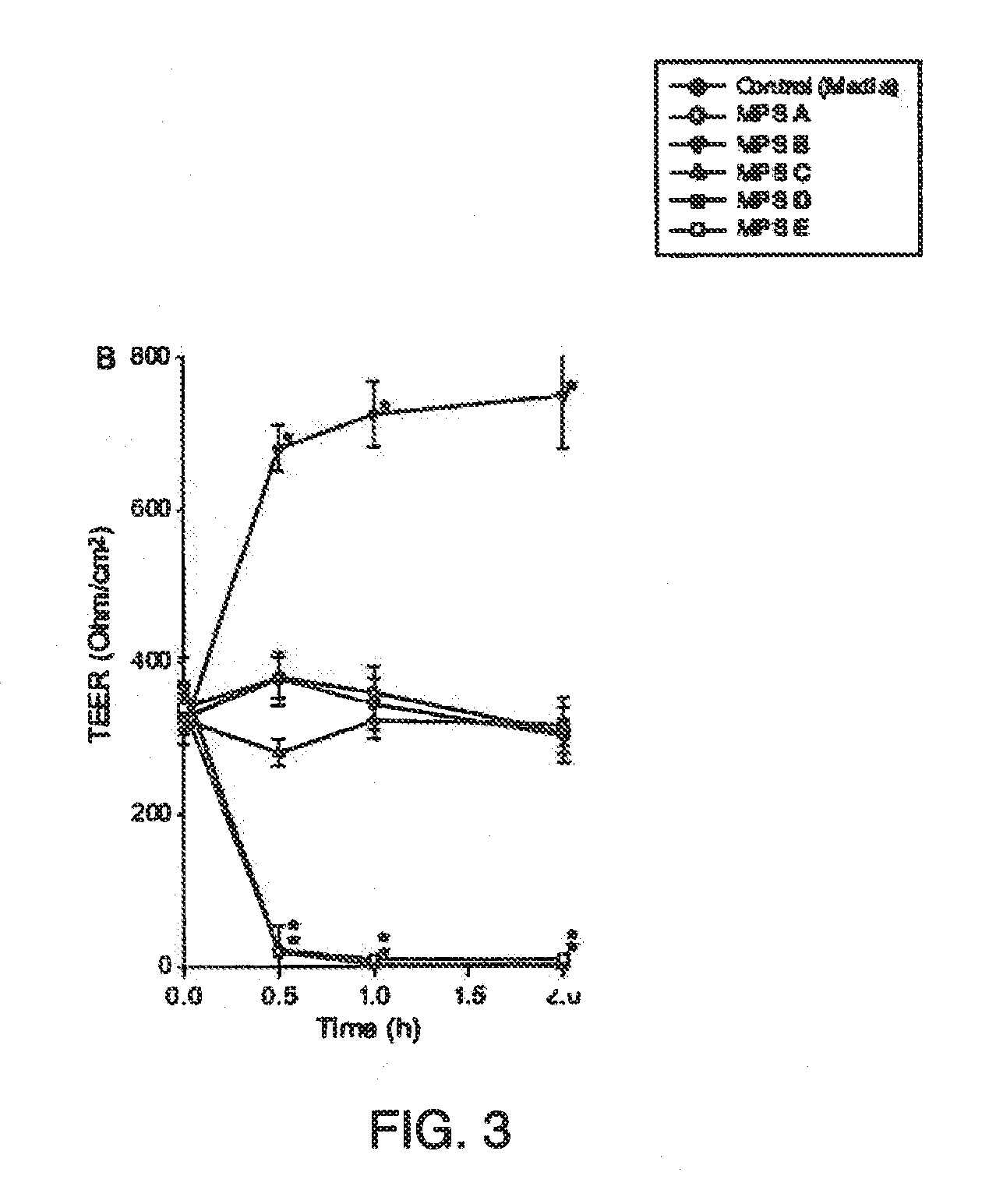Multipurpose Lens Care Solution with Benefits to Corneal Epithelial Barrier Function
a corneal epithelial barrier and multi-purpose technology, applied in the direction of detergent compounding agents, lens cleaning compositions, amphetamine/electroneutral surface active compounds, etc., can solve the problems of ocular irritation and risk factor for microbial infections
- Summary
- Abstract
- Description
- Claims
- Application Information
AI Technical Summary
Benefits of technology
Problems solved by technology
Method used
Image
Examples
example 1
[0082]A MPS is provided below with the components provided in wt. % unless noted as ppm.
Example 1Component(MPS A)boric acid0.64sodium borate0.11Na2EDTA0.025Tetronic ® 11071.0Na hyaluronic acid a0.01PHMB (ppm)1.3polyquaternium-1 (ppm)1.0sulfobetaine 3-100.05sodium chloride0.5
examples 2 to 5
[0083]
TABLE 6Example No.2345poloxamine / poloxamer0.50.50.50.5boric acid0.450.450.60.45sodium borate0.120.120.120.12citric acid0.10.1—0.1anionic biopolymer0.020.020.020.02polyquaternium-1 (ppm)1.51.5—1.0PHMB (ppm)0.8—0.81.1alexidine (ppm)—3.02.0—
Comparative Multipurpose Lens Care Solutions
[0084]Currently marketed MPSs were used as comparative examples in many of the tests that follow. MPS B, AQuify®, Ciba Vision, (Duluth, Ga.); MPS C, COMPLETE® MPS Easy Rub, AMO, (Santa Ana, Calif.); MPS D, OPTI-FREE® Express, Alcon, (Fort Worth, Tex.); and MPS E; OPTI-FREE® RepleniSH, (Alcon) were obtained commercially and used within their expiration dates.
Human Corneal Epithelial SV40 Transformed Cell Line
[0085]The original human corneal epithelial SV40 transformed cell line was obtained from Dr. Araki-Sasaki (Ideta Eye Hospital, Kumamoto, Japan), See, McCanna D. J. et al. in Use of a human corneal epithelial cell line for screening the safety of contact lens care solutions in vitro. Eye Contact Le...
PUM
| Property | Measurement | Unit |
|---|---|---|
| molecular weight | aaaaa | aaaaa |
| molecular weight | aaaaa | aaaaa |
| molecular weight | aaaaa | aaaaa |
Abstract
Description
Claims
Application Information
 Login to View More
Login to View More - R&D
- Intellectual Property
- Life Sciences
- Materials
- Tech Scout
- Unparalleled Data Quality
- Higher Quality Content
- 60% Fewer Hallucinations
Browse by: Latest US Patents, China's latest patents, Technical Efficacy Thesaurus, Application Domain, Technology Topic, Popular Technical Reports.
© 2025 PatSnap. All rights reserved.Legal|Privacy policy|Modern Slavery Act Transparency Statement|Sitemap|About US| Contact US: help@patsnap.com



